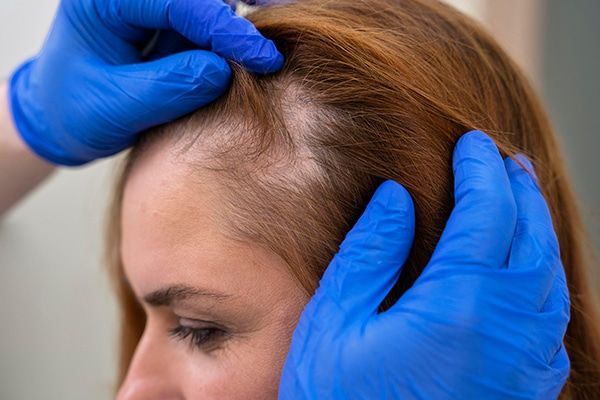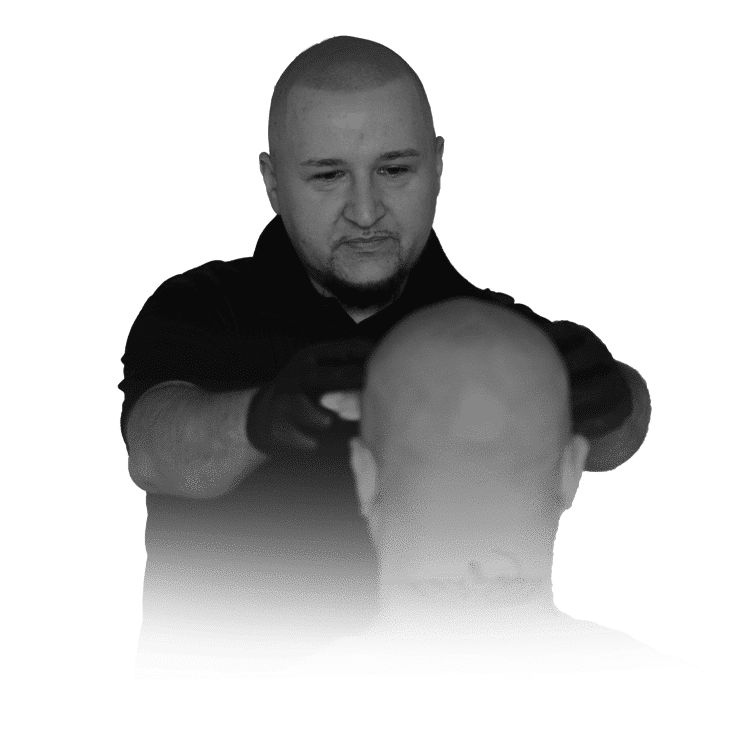Scalp Micropigmentation
What Are The Side Effects of Scalp Micropigmentation?

Scalp micropigmentation (SMP), also known as micro-pigmentation, is a form of cosmetic surgery that involves injecting pigment into the scalp using a very fine needle. This is a noninvasive option for hair transplantation. Scalp micropigmentation enhances and intensifies natural hair colour, corrects hair loss, and treats other cosmetic issues you may be experiencing. As expected, it may have a tendency to induce a few instant reactions from your skin, which can cause unaware clients some concern. As with any semi permanent cosmetic operation, it is essential to fully understand the ramifications of the therapy you are about to undergo.
In this article, we will be going over the various side effects of scalp micropigmentation and how you can mitigate these effects to ensure a healthy recovery!
How does Scalp Micropigmentation work
Before delving into its unexpected side effects, let’s first analyse what scalp micropigmentation is. Scalp micropigmentation employs the same methodology as tattooing. The procedure of tattooing involves injecting ink into a person’s skin. The coloured dye is absorbed by the tattoo cells, producing a permanent impression.
Micropigmentation of the scalp employs a similar method. A hair tattoo is created by injecting pigment into hair follicles with tiny fine needles. The dye remains in the scalp cells for a brief while, allowing the results to be observed. However, while a tattoo identifies the location of the inked area, scalp micropigmentation typically identifies the entire scalp.Typically, the entire process takes between 30 and 45 minutes to complete.
This pigment is used to alter the appearance of hairlines, thicken thinning hair, and give you a pronounced head. This technique is not risk-free, though. Therefore, let’s examine some unexpected adverse effects of scalp micropigmentation. Scalp pigmentation is a cost-effective solution to enhance your appearance without breaking the bank, as it is less expensive than hair transplant operations.
Depending on the rate at which your hair grows, you may need to shave at least twice every week. Despite being very low-maintenance, this might be exhausting for some. Find a shaving routine that works well for you to circumvent this issue. It could be an electric razor, hair clippers, or a shower shave. To treat fading colouration, three sessions are required to finish the initial treatment. You might need to return within a year to address any fading. After that, you will be healthy for between four and six years.
Does Scalp Micropigmentation appear natural?
SMP can appear very natural when properly executed, so you don’t need to worry about unwanted looks from strangers. It is directly related to the practitioner’s level of experience. Scalp micropigmentation is primarily concerned with realism, confidence, and the appearance of natural hair. It will look like your hair is cut near the scalp, giving the impression that you have denser, thicker hair. The colouring technique is designed to produce a realistic appearance that is effective for anyone attempting to treat their baldness.
How long does a Scalp Micropigmentation treatment last?
Micropigmentation of the scalp is categorised as semi-permanent by experts.The results will manifest gradually. Typically, they become visible one month following the treatment. As all skin naturally exfoliates, the treated region may fade over time even though the benefits can last up to eight years. Even while the colour will lighten after a few years, it will only change substantially if the wrong pigment is utilised. However, if your skin is dry, it is conceivable that fading will occur more rapidly. This will accidentally accelerate the pigment’s removal, as dry skin tends to flake. Your physician will most likely recommend avoiding using products that could irritate or further disturb the procedure.

What are the side effects I should be expecting?
- Redness
A common side effect of therapy is a mild redness shortly afterwards. Typically, it is the skin’s reaction to the perforation. Therefore, there is no cause for concern, as it will disappear after one or two days.
- Allergic reactions
Some individuals get an allergic response when the ink is applied to their scalp. This may be dependent on the practitioner’s choice of ink. The ink may contain heavy metals or reactants that could trigger an allergic reaction on the scalp.
- Swollen lymph nodes
Clients commonly report the appearance of bumps on the back of their heads quickly after a treatment session. A consumer once referred to them as “golf balls” despite their diminutive size. Occasionally, this issue is reported by the tattoo community. In most cases, lymph gland enlargement is caused by using non-sterile or unsuitable pigments; however, this is not always the case. Tattoo inks have been known to gather within lymph nodes and even trigger cancer scares, but if you detect this symptom after your treatment, it is nothing to worry about since it will subside with time.
- Excessive dry skin
When undergoing micropigmentation, an anaesthetic solution is typically applied to the skin. The skin should not become overly dry after this procedure. However, it is possible for some individuals who undergo this operation. This can dry out and irritate the scalp in rare instances.
- Change in hair colour
Although micro scalp pigmentation can give some people a brighter, lighter, or more reddish appearance, it can substantially alter hair colour, especially if the operation is not completed correctly. Some individuals claim that their hair colour changes gradually at first and later fast. Micropigmentation of the scalp typically does not result in the formation of scars or keloids. However, there are outliers, and permanent scarring might occur at the surgery site.
Since micro-pigmentation does not include the actual presence of hair, it will not change colour (maybe fade) as one would expect due to natural hair ageing.
- Itchy sensation
Micropigmentation of the scalp can cause very itchy, red, and inflamed skin. In addition, when injecting hair into the scalp, the surrounding skin may become tender and uncomfortable. A purple or red rash with open pores is a common adverse effect of micro scalp pigmentation. In rare instances, this rash can be excruciating. Those with a history of contact dermatitis or sensitivities to pigments, skin medicines, or metals should avoid micro scalp pigmentation or seek medical assistance if this rash develops.
Conclusion
Although the potential side effects of hair transplants are numerous, the surgery is generally considered relatively safe. In the majority of instances, side effects are transient, however, several can affect the patient’s physical look and cause brief discomfort. Scarring is the most prevalent long-term complication, and individuals prone to keloid scarring should avoid the surgery entirely. Those contemplating a hair transplant should visit a physician beforehand and locate hair transplant specialists in order to avoid the danger of bleeding or other injuries during the process.
If you’re searching for a trustworthy practitioner of scalp micropigmentation in Melbourne, then Luxe Micro is the team you’ve been searching for! Luxe Micro is a facility in Melbourne that offers hair tattoo treatments. We take great pleasure in being the best at helping clients with hair loss and hair thinning issues. Our practitioners are highly qualified and were trained as an expert in hair tattooing by industry leaders. Regardless of your issue – male or female pattern baldness, thinning hair, Alopecia, facial hair patches, or scalp scars – SMP may be the answer!







